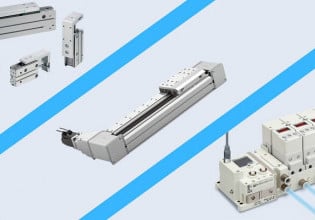5 Best Reliability Techniques For Analyzing Fault Tolerance
Faults and failures are an unavoidable part of any system, but it is important to reduce downtime risks by mitigating failures and designing fault tolerance into critical system elements.
If parts of a system fail but continue to operate, then it is known as a fault-tolerant system. This ability is important in a wide range of applications where downtime just isn't an option.

Figure 1. No system can fully avoid faults and failures. Image used courtesy of Canva
Here are five of the best reliability techniques for analyzing fault tolerance:
#1: Fault Tree Analysis (FTA)
FTA is a technique extensively used to analyze fault tolerance by identifying the various combinations of failures in the components that can lead to a catastrophic failure of the entire system. The purpose of FTA is to evaluate the probability of various scenarios and find ways to prevent or mitigate them.

Figure 2. Fault tree analysis (FTA) flowchart. Image used courtesy of Adobe Stock
FTA starts with a top catastrophic event that is being analyzed and works downward to identify all the combinations of component failures that lead to the top event.
The component failures are represented by basic events linked to the top event through various logical operators such as AND, OR, and NOT. The probability of each basic event is estimated, and these probabilities are combined to calculate the overall probability of the top event.
Locating sources of failures in mechanical systems is crucial in modern manufacturing facilities. FTA is employed in almost every engineering discipline as it identifies the defects and weaknesses of the system and analyzes them both qualitatively and quantitatively.
#2: Failure Modes and Effects Analysis (FMEA)
FMEA can be used to analyze fault tolerance by identifying potential failure modes of a system and evaluating its consequences. It provides a structured and systematic approach to identifying potential problems and prioritizing them to prevent or mitigate their effects. Also, it helps to identify the most critical areas that need to be addressed to improve the overall reliability and safety of the system.

Figure 3. FMEA analyzes both the fault effects and severity. Image used courtesy of Adobe Stock
FMEA starts by listing all the components or parts of a system and then identifying how each component could fail. For each potential failure mode, the effects of the failure on the system as a whole are evaluated, and a severity rating is assigned based on the impact of the failure on safety, performance, or other critical factors.
It’s one of the most practical design tools implemented in product design to analyze possible failures and improve the design. Conducting FMEAs early in product development allows you to make more informed decisions about the risks you may eventually uncover later.
#3: Monte Carlo
Monte Carlo can be used to generate multiple random scenarios and simulate different types of faults that can occur in a system and calculate their probabilities. The method can be applied by randomly generating inputs that represent potential failures and using them to run simulations of the system.

Figure 4. Monte Carlo simulations provide a probability of potential faults and errors. Image used courtesy of Wikimedia Commons
The results of these simulations can determine the fault tolerance characteristics of the system, the overall reliability of the system, and the chances of different types of failures. You can use the results of the Monte Carlo analysis to identify potential weak links in the system and thereby improve its fault tolerance.
Digital transformation, commonly known as Industry 4.0, requires precise evaluation of the quality of the process. Machine reliability will be of utmost importance in the factory of tomorrow, and these simulations can play an important role in improving these estimations.
The Monte Carlo method is being used in diverse fields such as biotechnology, chemical, energy, and environmental engineering systems.
#4: Root Cause Analysis (RCA)
RCA is a systematic approach to identifying the underlying cause of a failure. You start by collecting data on the failure or problem—including its symptoms, causes, and contributing factors. The data is then analyzed to determine the root cause of the failure to identify the underlying weaknesses that contributed to the failure and help to develop corrective actions to prevent recurring failures.

Figure 5. Root cause analysis traces problems back to an origin point, preventing future similar failures.
RCA provides an approach to identifying the root causes of failures and developing corrective actions to prevent the failures from recurring. It helps to improve the overall reliability and safety of the system.
RCAs are often conducted by engineers in manufacturing to identify what, how, or why a precipitating event occurred. It helps to identify the contributing factors to quality issues within their operations.
Ford Motor Company developed a standardized method for dealing with design and manufacturing problems, and RCA was one of them. RCA was done for the Tesla Model S 70D Crash after the first fatalities of a self-driving car happened.
#5: Markov Chain Model
The Markov process is a flexible and powerful tool to analyze fault tolerance by developing a mathematical model that indicates the probabilistic behavior of a system. It can predict system failures over time and provide estimates of the expected time between failures.
Markov chain models can be used to analyze the behavior of a wide range of systems, including systems with multiple components, systems with redundancy, and systems with repair and maintenance capabilities. They provide a flexible and powerful tool for modeling system behavior. You can use it to analyze a wide range of scenarios—including system reliability, system availability, and system maintenance requirements.

Figure 6. Complex systems with redundancy and many variables often rely on the Markov chain model to analyze faults. Image used courtesy of Wikipedia
Operators of renewable energy systems must always manage uncertainty, and they use the Markov chain model to evaluate and ensure the reliability of the electric power supply systems. Also, with the exponential growth of autonomous electric vehicles, research on reliability analysis of autonomous driving is often done using the Markov Chain Model.
Parting Thoughts
Fault tolerance is a requirement for many critical applications because it ensures that the system continues to operate even when some of its components fail. It is a key aspect of modern systems design and a crucial consideration for applications where downtime has to be minimal.







The article provides an overview of the common reliability techniques used in the Industry. It serves its purpose.